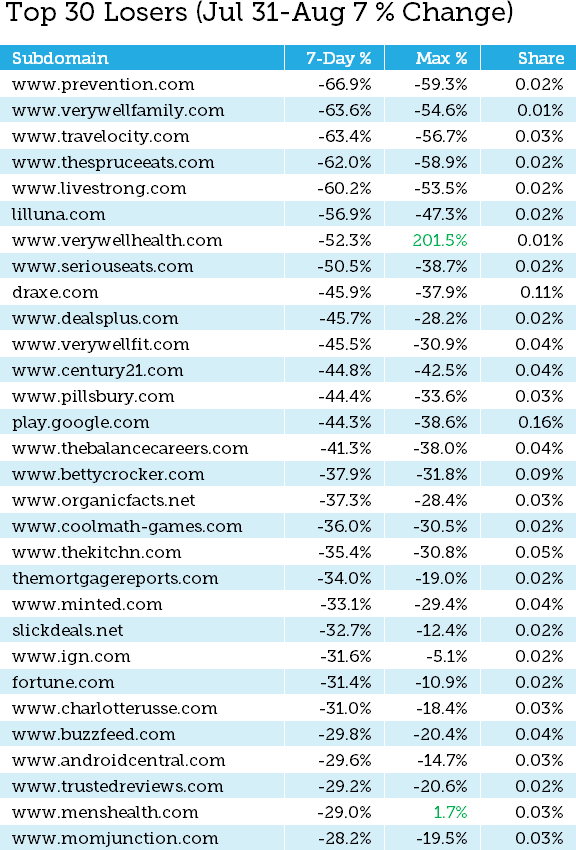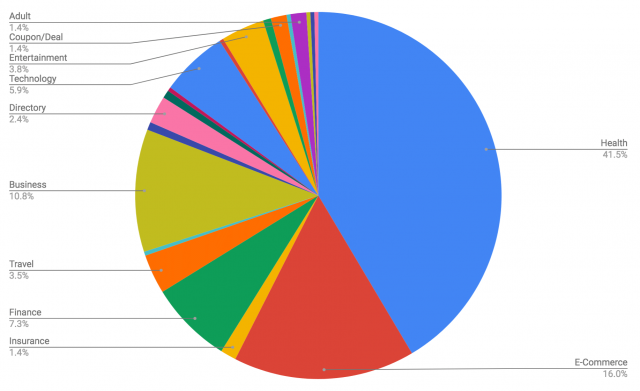The Google E-A-T algorithm update is part of a long line of major changes to how Google ranks websites. While they introduce smaller changes several times a day, it’s the major updates that really impact the lives of websites owners. This time is no exception.
While the E-A-T update didn’t make as big a splash as others in the past (think Mobilegeddon) it does come with important implications that you should know about. For that reason, in the following, you will learn what the Google E-A-T algorithm update is, its effects on search and what you can do to make sure your WordPress site continues to perform well.
Let’s get going.
So, What Exactly is the Google E-A-T Algorithm Update?
First of all, this update isn’t a very new thing. It already happened in the beginning of August 2018. At that time, a lot of people SEO people noticed fluctuations in search rankings. In addition to that, Google also announced that there would be a broad update, something they don’t often do.
This week we released a broad core algorithm update, as we do several times per year. Our guidance about such updates remains the same as in March, as we covered here: https://t.co/uPlEdSLHoX
— Google SearchLiaison (@searchliaison) August 1, 2018
Here’s what happened.
It Changes How Google Ranks YMYL Pages
If you have never heard of YMYL, you are not alone. It’s an acronym that stands for “your money or your life” and it’s a term that Google uses for:
[…] Types of pages [that] could potentially impact the future happiness, health, financial stability, or safety of users. — Google Quality Raters Guidelines
The August 2018 update had the most effect on websites and pages that fall into that category. Some of them saw immense changes in their search traffic.

As you can see, losses of more than 50 percent of visitors within the span of a few days were not common, even among heavyweights like LiveStrong and The Kitchn. Generally, those that were most affected were sites in the health, fitness, nutrition, wellness, and medical sphere.

That’s also the reason why some people refer to what happened as the Google “medic” update. However, other sectors such as e-commerce and business also saw big changes. In addition, there were changes for local search queries but that’s not something most people focused on.
It Apparently Focuses on Markers of Expertise, Authoritativeness, and Trust
The annoying thing about this update is that Google didn’t really say what it was about. And it’s not like people didn’t ask.
Can you say what percentage of queries this impacted? (like the old days)
— Barry Schwartz (@rustybrick) August 3, 2018
Their response on how to deal with lost rankings stayed relatively vague and ranged from “create great content” to using the aforementioned Quality Raters Guidelines (for which we also have an article).
However, the greater consensus of the SEO community is that the target was E-A-T markers. E-A-T is a term that found its way into the guidelines shortly before the update and it also makes sense from the analysis. As you can probably already guess, it stands for:
- Expertise — How knowledgeable the site owner or content author is on the subject matter they talk about. This is especially important for the aforementioned YMYL sites, not so much for gossip websites or similar.
- Authoritativeness — The credibility of the website publishing the content. This includes any credentials, outside reviews, testimonials etc.
- Trustworthiness — Examines how trustworthy the site in question is. It means overall site quality and especially factors like site security.
In short, the Google E-A-T guidelines are all about evaluating whether users can trust you. The goal of considering them more strongly in the search algorithm is, as usual, to provide searchers the best possible results for their queries. However, what does that mean for your website?
How to Implement Google E-A-T Guidelines
By now, your most burning question is probably how you can avoid being demoted on grounds of E-A-T or, if you already suffer from reduced traffic, how you can recover. The rest of the post will be about just that.
1. Take a Hard Look in The Mirror
Something that you often need to stress about SEO is that it is not about tricking search engines into sending you traffic. Instead, it’s about understanding that updates like this are aimed at making search better for users. In the end, Google wants to deliver their users the most relevant and high-quality results. As a consequence, your mission should be the same.
To achieve it, your first task is to look at what you are doing. If you already have a great website, blog, company, product, service or whatever you are offering, this will organically lead to links, reviews, positive press and a lot of other things search engines use to evaluate quality. On the other hand, if it isn’t the case and you leave a lot of users, clients and visitors wanting, you will likely not perform well in search no matter how much technical SEO you do.
Therefore, the first order of the day is to examine your own site and see if anything could be considered sketchy, spammy, or harmful to others. If so, that’s the first thing to take care of.
2. Optimize Your About Page
One thing that the Google guidelines clearly state is that it should be clear who is responsible for the information on your website. This is also something that matters to users. They want to know who is behind the site they are on to understand if they can trust it.
One of the most basic ways to achieve this is to implement an About page. However, to fare well in an E-A-T world, it’s not just about the fact that this page exists but also that it contains important markers of expertise, authority, and trustworthiness. This could be:
- Experience and/or expert status of you and/or team members
- Awards you have won or been nominated for
- Positive press about you
- Testimonials from clients
- Academic titles or other formal qualifications
- Business address and contact details
If you haven’t looked at your About page in a while, chances are there is a good deal missing. Time to change that. For more information about what to include, look into our article on trust signals.
3. Show the Expertise of Everyone on Your Site
What goes for your site in general also applies to the people working on it. Anyone creating content should have an author profile that lists their credentials. You edit the profile by clicking on the username in the upper right corner of WordPress.

Here, fill out your biographical info.

When you do, and your theme is configured that way, this information will show up at the bottom of articles written by the person (just scroll to the bottom of this post for an example) and also at the top of author archives.

The latter has the added bonus that it turns archive page into unique content, which is another positive SEO signal.
However, what belongs in an author profile to appeal to the Google E-A-T algorithm update? Here are some ideas:
- Popular blogs or businesses you own
- Speaking engagements and conferences and industry events
- Important companies you work for or have been associated within the past
- Awards you have won
In short, pretty similar information as for your site as a whole but on the individual level. For more tips on creating professional author profiles, read this article.
4. Manage Your Reputation
However, just like SEO isn’t only about on-page optimization but also off-page measures, E-A-T also concerns your site’s environment. In addition to the above, that means making sure that your reputation around the web is as good as possible. Here are some important factors for that:
- Press coverage — If there is a way you can get featured on reputable new sites, by all means, do. Just a quick caveat: Google is pretty good at figuring out when coverage was bought vs when someone gives their real opinion. So, don’t pay for play.
- Reviews — Same as for the press coverage. Get featured on sites in your industry and have others review what you have to offer. Again, that supposes reviews are likely to be favorable. If not, you have a whole other problem.
- Guest posts — To build E-A-T for yourself and your authors, it’s also a good idea to get featured on other sites with high reputation. When you can do that, it will reflect well on you. For tips on guest blogging, check this post.
- Testimonials — Finally, you may want to collect feedback from clients and customers and post it on your site. Follow this guide for that.
You can find even more tips on reputation management here.
5. Improve Your Content
Your content is always front and center when it comes to performing well in search engines. However, it, too, needs to enhance your site’s E-A-T.
For one, that means that your content fulfills exactly those criteria. That it’s expertly written, authoritative and trustworthy. For excellent advice on how to achieve this, check Brian Dean’s Skyscraper Technique and Moz’s 10x Content.
As mentioned above, this also includes content created by others, such as guest authors. All posts on your site need to be up to those standards or they will hurt you in the long run. Creating a style guide can help tremendously with that.
However, improving your content for the Google E-A-T algorithm update also means reviewing your existing posts to see if they help or hinder your efforts. Especially older content can sometimes hurt your overall reputation, mostly because you usually get better over time.
The first step for that is to dive into your analytics data. A look into Google Search Console also wouldn’t hurt. Both will help you identify pages that perform poorly in terms of traffic and conversions. Once you have done that, you can set out to improve them. That means, either update their content, merge them with other posts or get rid of them completely.
Note, if you decide to delete any page, make sure to implement relevant redirects. The redirection plugin can help with that.
In Short, The Google E-A-T Algorithm Update is All About Increasing Site Quality
Anyone who wants to continue to rank well in search engines needs to keep up with the constantly changing landscape of SEO. Especially Google’s major algorithm changes are always a cause to re-evaluate your strategy.
The E-A-T algorithm update is no exception, specifically if you run a YMYL site. It is another step by Google toward providing searchers with the best, most relevant and most trustworthy results. If being considered as such was already on your agenda, you probably didn’t have that much too fear. For everyone else, it’s a chance to think about how to further improve your site and make it fit for future changes.
Here’s a quick summary of the steps mentioned above:
- Re-evaluate your overall site and see if it could be disagreeable somehow
- Optimize your About page to include E-A-T makers
- Be sure to also display the expertise of site contributors
- Take action to manage your reputation
- Continue to improve your content, both existing and new
With the above, you should be well on your way to adhering to Google E-A-T guidelines and improve the quality of your site in the process.
Do you have additional tips on how to deal with the Google E-A-T algorithm update or general thoughts on it? Please let us know in the comments section below!
The post The Google E-A-T Algorithm Update (And What It Means for Your WordPress Site) appeared first on Torque.
